It’s a cliche of American politics that the vice president is next in line for their party’s presidential nomination.
It’s a weird cliche, though, because it’s almost never true.
The last time an incumbent VP landed at the top of the ticket was Al Gore in 2000. The last time an incumbent VP actually won the presidency was George H.W. Bush in 1988. Before Bush, the last sitting vice president to manage that feat was … Martin Van Buren in 1836.
Many caveats apply. Former VPs like Richard Nixon and Joe Biden have gone on to be president, just not as immediate successors to the president whom they served. Numerous vice presidents have ascended to the presidency upon the death of the incumbent and then been elected to the office themselves, like Harry Truman and Lyndon Johnson.
Yet the fact remains that the position in which Kamala Harris now finds herself, simultaneously vice president and presidential nominee, is unusual in American history. And no wonder: Presidential administrations acquire baggage over time, and the incumbent VP is stuck having to carry that baggage in their own campaign.
After losing the 2000 election, for instance, Gore reportedly told Bill Clinton to his face that Clinton’s sex scandal in office had overshadowed the race. But even absent that sort of sensational burden, vice presidents are doomed to run up against voter fatigue with the policies of the White House they’ve served in. Americans inevitably grow frustrated over time with the in-party and crave change, and change is the one thing the veep can’t credibly offer.
It’s not a coincidence that only once since term limits were adopted has a party managed to control the presidency for more than eight consecutive years.
Harris has the advantage of succeeding an incumbent who’s served four years, not eight, which should lessen the fatigue factor. But she has the distinct disadvantage of inheriting the baggage of a president who is historically unpopular, with a policy record that includes the worst inflation in 40 years. “They’ve been aligned for the past three and a half years. There’s not been any daylight,” White House Press Secretary Karine Jean-Pierre said on Monday when asked how supportive Harris has been of Joe Biden’s policies.
Americans want a change, and Kamala Harris is the worst possible choice to offer that change. In theory.
Yet, against all odds, she’s become the “change candidate” in the race. And even more improbably, the thing that’s made that possible is the very thing that’s propelled Donald Trump’s popularity over the last nine years: nostalgia.
The change candidate.
The most remarkable subplot of Harris’ fledgling candidacy isn’t the crowds or the fundraising or the preternatural discipline she’s demonstrated in avoiding anything resembling a challenging question. It’s the polling that shows her doing considerably better against Trump on the economy than Joe Biden did.
Survey after survey confirms it. YouGov found Trump leading Biden by 18 points on handling inflation, yet leading Harris by only 11. Morning Consult had Trump up 13 points against the president on the same issue, then up 5 points against her. On the broader question of the economy, Trump led Biden by 9 in Marist’s June poll but led Harris by only 3 in August. A Financial Times poll published this weekend actually had her a point ahead of Trump on whom voters trust more economically. Biden trailed by 6 on that subject in July.
Another recent survey from the New York Times found Trump still leading Harris by 9 points on the economy but noted that, “Voters are now about equally likely to say that either Mr. Trump or Ms. Harris would bring about the right kind of change.” That same survey had her ahead 50-46 in each of the three key Rust Belt battleground states, on track to win the election.
American voters do seem to perceive “daylight” between Biden and Harris on the most important issue in the election, even if the White House does not. Unusually for a vice president, she seems to be “unburdened by what has been” in the administration she serves in. How come?
The answer starts with the other two guys in the race. As rare as it is for an incumbent VP to win her party’s nomination, it’s rarer for two presidents to face each other in the general election. We were on track to have it happen again as of a month ago (to the exasperation of most voters). Americans weren’t happy being governed by either Donald Trump or Joe Biden, yet we somehow ended up forced to choose between them. Until, suddenly, we weren’t.
When the only thing on television is reruns of a show you hate, anything new seems exciting and revelatory. Kamala Harris, the lone remaining candidate this year never to have been president, is the “change candidate” by default despite being the sitting veep.
The fact that she’s demographically far afield from Biden and Trump helps too. The would-be first woman president can’t help being a “change candidate” to some extent, especially a black woman upending a race between two familiar white men. But the fact that Biden’s cognitive decline became such a momentous liability for him has made her youth unusually significant by comparison.
I’ve speculated before that voters tend to view Biden’s policy failures as symptoms of his senescence, as though inflation might have been contained if only he had the mental wherewithal to anticipate the problem and address it effectively. If I’m right about that, then go figure that the 59-year-old Harris wouldn’t carry as much of his policy baggage as we’d normally expect of an incumbent vice president. In a singular way, his governing record is bound up with his personal debilitation; removing the person of Joe Biden as nominee substantially lightens the burden of that record.
Harris’ opponent is also making it easier for her to become the “change candidate” simply by being himself. “Trump seems incapable of putting aside his 2020 defeat,” Jeff Greenfield noted in a piece for Politico. “He persists in relitigating his false election theft claims, even to the point of assailing the hugely popular Republican governor of Georgia. Whatever else that is, it is not change.” How many weary, desolate casual voters watched Trump ramble about the size of his crowds for the umpteen-thousandth time during last week’s press conference and found themselves thinking that Harris’ new slogan sounds pretty good after all?
Ironically, her own low profile as vice president since 2021 might be paying off by making it easier for her to posture as the “change” agent in the race. She’s kept her head down since the early days of the Biden administration, when she was given the thankless job of “border czar” (or something like that) and gained a reputation for answering tough questions in interviews with solemn-sounding word salads. If Dick Cheney is the modern model of a “strong” vice president—staunchly ideological and confident in defending his administration’s policies—Harris is the opposite.
But weakness in this case is an electoral virtue. Because the public hasn’t seen much of her, they don’t seem to associate her closely with Biden’s record. When Republican activists wonder aloud who’s “really” running the country in lieu of our frail president, Barack Obama and Hillary Clinton are often mentioned—but less so Harris. She hasn’t defined herself clearly enough over the last three and a half years to become a good villain for the right.
That’s not the worst place to be for a candidate who’s now leading the polls with gassy promises that “we’re not going back” without offering so much as a whiff of what that might mean policy-wise.
There’s one more element that explains how Harris became the candidate of hope and change, though. It has to do with the other candidate of hope and change.
Memory lane.
The not-so-secret ingredient in Donald Trump’s political success is nostalgia, as you’d expect in a movement that vows to make America great “again.”
Nostalgia is baked into right-wing politics to some degree. The left is forever trying to pull traditions up by the roots in the name of progress; the right is forever trying to loosen their grip, insisting that life was better when those traditions were respected. Trump’s nationalist politics aims to restore American greatness by restoring the cultural dominance of America’s traditional majority. That nostalgia is powerful enough to have made him president once. It might do so again.
The left’s nostalgia tends to be for futures that they once believed lay ahead for America—but then, to their dismay, didn’t happen. The so-called “emerging Democratic majority” is one.
The Emerging Democratic Majority was written in 2002 by John Judis and Ruy Teixeira and argued that “the country's shifting demographics were giving rise to a strong new Democratic-voting population base,” in Teixeira’s words. Minorities, women, and college graduates were growing over time as a share of the population, they argued, and each group was trending leftward. Democrats had the makings of a durable electoral majority.
Pretty good theory. In the five presidential elections since the book was published, Democrats have won the national popular vote four times and are likely to do so again this fall. The highest apparent proof, though, came in 2008. That year, the first black president was elected, and he led his party to a large majority in the House and a filibuster-proof majority in the Senate. The emerging Democratic majority had fully emerged, it seemed, in a ground-shaking way.
Barack Obama’s first campaign was the acme of Democratic political power this century. Their candidate was young, optimistic, charismatic, and at the head of a demographic revolution that looked like a harbinger of left-wing control of governance.
Then a boorish halfwit game-show host came along and presidential elections have been on a knife’s edge ever since. It wasn’t supposed to be this way.
For liberals, the emerging Democratic majority was supposed to make winning easy, the way it was when a historic African American candidate was filling arenas by offering sunny platitudes about “hope” and “change” to voters exhausted by the tumultuous Bush years. Obama did outline some policies, starting with ending the war in Iraq, but he was shrewd in grasping the nature of his appeal: “I serve as a blank screen on which people of vastly different political stripes project their own views,” he famously wrote.
But 2008 was the start of a future that never was.
Obama won reelection in 2012, but only by running a much more harshly negative campaign than his first. In 2016, liberals somehow found themselves nominating a widely disliked relic who had been around since the last Democratic administration of the pre-Obama era. Then, for the sake of finding the most electable alternative to Trump, they nominated an old white guy in 2020 who’d been in the Senate since the Nixon administration.
Not only was the so-called emerging Democratic majority too small and unreliable to guarantee Democratic victories, it turned out, but the sort of political leaders it heralded had vanished along with Obama at the end of his second term. Renominating a feeble, deeply unpopular Joe Biden in 2024 amounted to throwing in the towel on Judis’ and Teixeira’s theory altogether.
Until, in a blink, Kamala Harris replaced him as the party’s nominee. And just like that, “the future that never was” was back.
Less than a month after the president quit the race, Democrats once again have a historic African American candidate filling arenas by offering sunny platitudes about “hope” and “change” to voters exhausted by the tumultuous Trump years. Harris is so keen to present herself as a “blank screen” onto which Americans can project their own views that her campaign website doesn’t have a “policy” section. And she’s picking up steam among black voters and young adults, key components of the Obama coalition.
After the dismal, aimless Clinton campaign of 2016 and the dour “anyone but Trump” pitch of Biden’s 2020 run, Democrats finally have something approximating the “vibes” of Obamamania. Obama presented himself as an optimistic antidote to an unusually grim era of Republican rule that had frayed the country’s nerves, a candidate of radical change more so in his tone and his identity than in his policies. Sixteen years later, Harris is doing the same thing.
She’s even staffing up with big-name veterans of Obama’s presidential campaigns like David Plouffe and Stephanie Cutter. “Haven’t seen anything like this in 16 years,” Cutter recently tweeted about one of Harris’ rallies. Another Democratic strategist agreed. “It’s the first pure joy presidential campaign on the Democratic side in quite some time. The surge in energy feels like the closest thing we have experienced since Obama ‘08,” he told The Hill.
“We’re not going back,” Harris likes to tell her audiences, referring to the Trump years. But Democrats do want to go back to the future that seemed to await them in 2008. It’s a nostalgia trip. And like the right’s own brand of nostalgia, it’s largely a fantasy.
Kamala Harris won’t be bringing back the emerging Democratic majority, the fondest nostalgic hopes of liberals notwithstanding. Ruy Teixeira himself explained why in an essay earlier this month. The key to Obama’s electoral strength was building Democratic margins among nonwhites, women, and college graduates while also remaining competitive with blue-collar voters, he noted. That’s no longer the case for Democratic nominees today. A “class gap” has opened up in which better educated voters continue to trend left while less educated voters of all races continue to shift toward the Trumpified GOP. There’s no evidence in early polling of Harris meaningfully closing that gap.
You can’t create a durable emerging majority while the bottom is falling out of your working-class base.
Why the class gap has opened is complicated. The right’s populist turn under Trump is obviously part of it; Judis and Teixeira suspect that Democrats alienated many blue-collar voters by promoting corporate-friendly policies and indulging “woke” progressive cultural radicalism. But either way, the particular future to which many liberals yearn to return will take a lot more work than merely nominating Harris and dusting off the Obama 2008 playbook.
Perhaps what Democrats are truly nostalgic for is the era in which they could still credibly claim to be the party of the working class. Defeating Trump this fall will have to suffice instead.
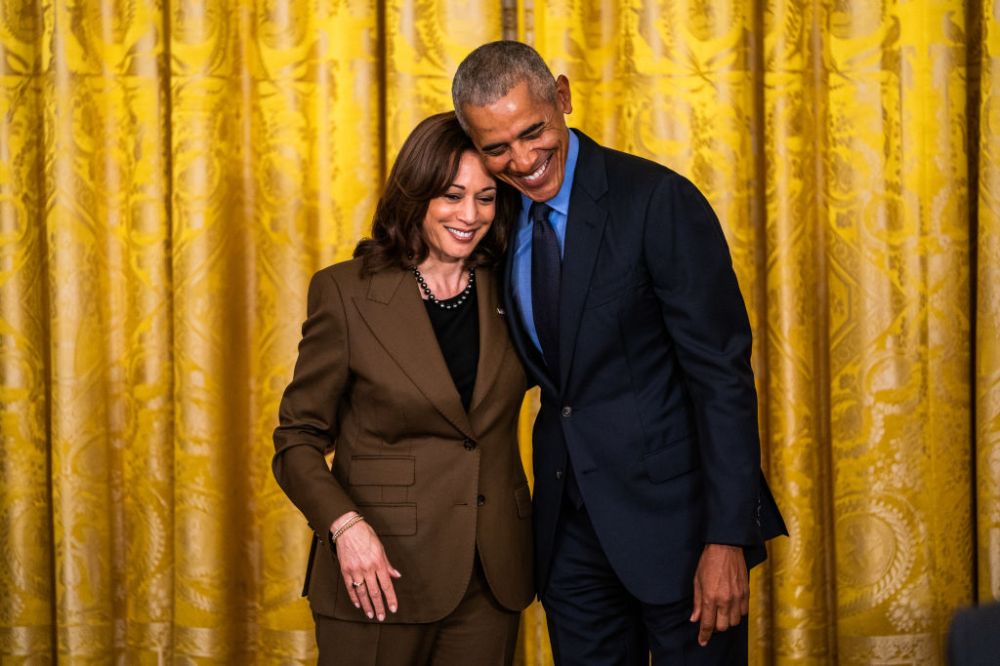

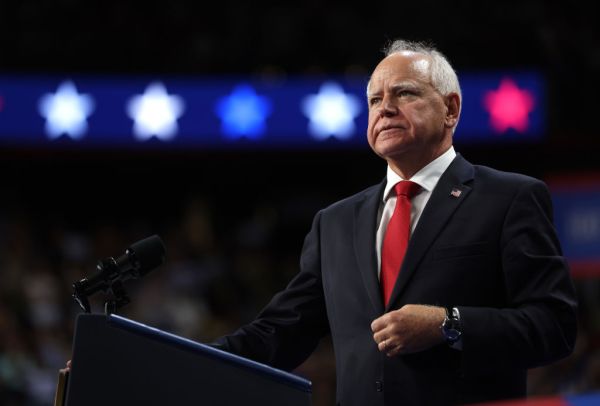
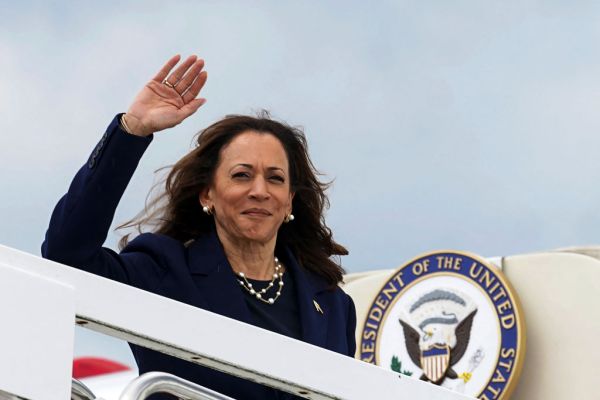
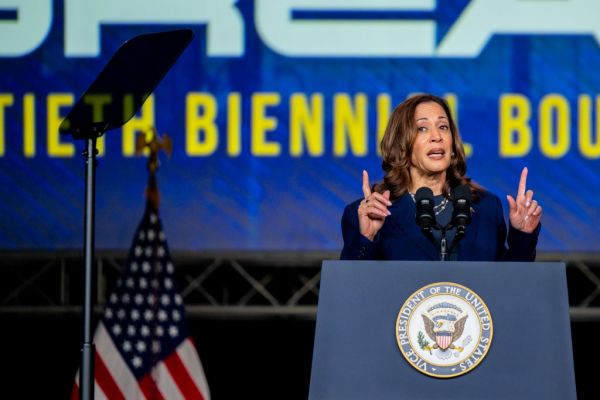
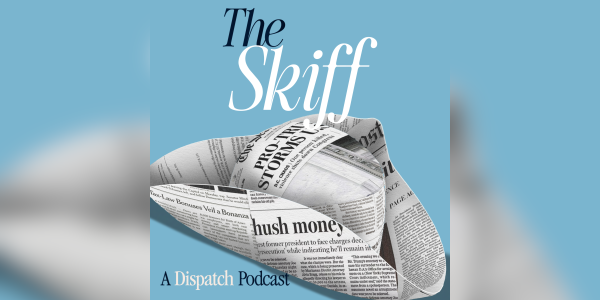
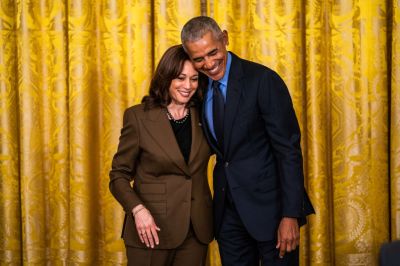
Please note that we at The Dispatch hold ourselves, our work, and our commenters to a higher standard than other places on the internet. We welcome comments that foster genuine debate or discussion—including comments critical of us or our work—but responses that include ad hominem attacks on fellow Dispatch members or are intended to stoke fear and anger may be moderated.
With your membership, you only have the ability to comment on The Morning Dispatch articles. Consider upgrading to join the conversation everywhere.